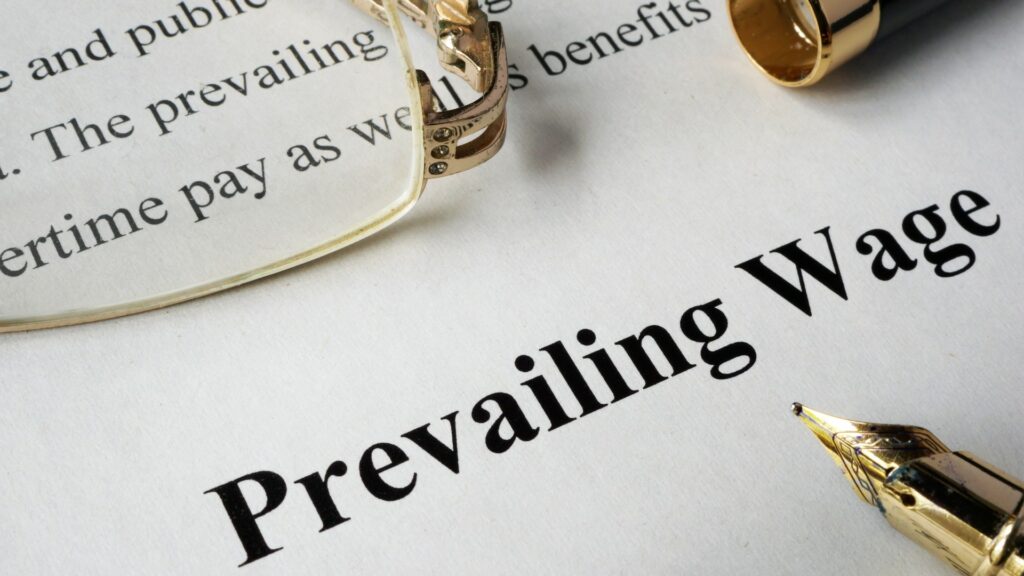The Department of Labor (DOL) is once again attempting to raise the prevailing wages associated with the H-1B, H-1B1, E-3 and PERM programs.
The DOL released earlier this week a draft of a final rule that will “incorporate changes to the computation of wage levels under the Department’s four-tiered wage structure based on the Occupational Employment Statistics (OES) wage survey administered by the Bureau of Labor Statistics (BLS).”
“The primary purpose of these changes is to update the computation of prevailing wage levels under the existing four-tier wage structure to better reflect the actual wages earned by U.S. workers similarly employed to foreign workers,” the DOL claimed in the final rule.
Specific information about the timing and impacts of the final rule follows below:
What is the prevailing wage?
Certain visa types are subject to provisions established by the Immigration and Nationality Act requiring employers to pay foreign national workers the same rates as similarly employed U.S. workers, to guard against wage suppression and the replacement of U.S. workers by lower-cost foreign labor.
This provision has been established in law for more than 50 years. However, the new rule will change the wage thresholds.
In connection with the H-1B, H-1B1, E-3 and PERM programs, the Department of Labor uses Occupational Employment Statistics (OES) data from the Bureau of Labor Statistics (BLS) to determine prevailing wages for a wide range of occupations.
The prevailing wage rate is defined as the average wage paid to similarly employed workers in a specific occupation in the geographic area of intended employment.
The OES prevailing wage is subdivided into four tiers or wage levels, representing the range of skills from entry level to experienced.
Prevailing wage tiers
The new DOL rule will increase the calculation of prevailing wage levels by raising the entry level minimum to the 35th percentile and raising the minimum percentiles for more skilled and experienced workers commensurately. Specifically, the levels will be raised to:
- Level I (entry level): 35th percentile (from 17th)
- Level II (qualified): 53rd percentile (from 34th)
- Level III (experienced): 72nd percentile (from 50th)
- Level IV (fully competent): 90th percentile (from 67th)
Therefore, the DOL will raise the “required wage” for H-1B visas, which is equal to or higher than the “prevailing” wage for the specialty occupation in the local labor market or the “actual” wage paid by the employer to other workers with similar responsibilities and qualifications.
This will also impact wages connected to H-1B1 and E-3 applications as well as employment-based immigrant petitions requiring labor certifications.
Specifically, the rule changes the way in which the DOL calculates the prevailing wage when based on OES surveys for each of these programs, leading to higher wages.
The new regulation does not prohibit employers from continuing to rely on alternative wage sources rather than DOL prevailing wage data for labor certification applications (PERM) and labor condition applications (H-1B, H-1B1, E-3).
Timing
The new prevailing wage levels take effect on July 1, 2021, and will be implemented with a “phased approach,” according to the draft of the final rule. Most positions will not become “subject to the full increase to the new levels until July 1, 2022.”
The draft of the rule adds that for “workers who are on track to receive lawful permanent resident (LPR) status, as indicated by their being the beneficiaries of approved employment-based green card petitions, or otherwise eligible to extend their H-1B status beyond the six-year limit, the Department has determined that a more gradual phase-in occurring in four steps that results in job opportunities filled by such workers being placed at the new wage levels beginning on July 1, 2024, is appropriate.”
Previous attempt to raise prevailing wage levels
The DOL published a similar final rule that took effect immediately in early October. That rule was blocked by three federal judges.
The rule released this week is also expected to face multiple legal challenges in federal court.
Furthermore, various media have reported that President-Elect Joe Biden intends to issue a memo freezing any rules that have not yet taken effect once he is sworn in on Jan. 20.
The attorneys at Garfinkel Immigration Law Firm are monitoring the situation closely and will alert clients as the situation evolves.

